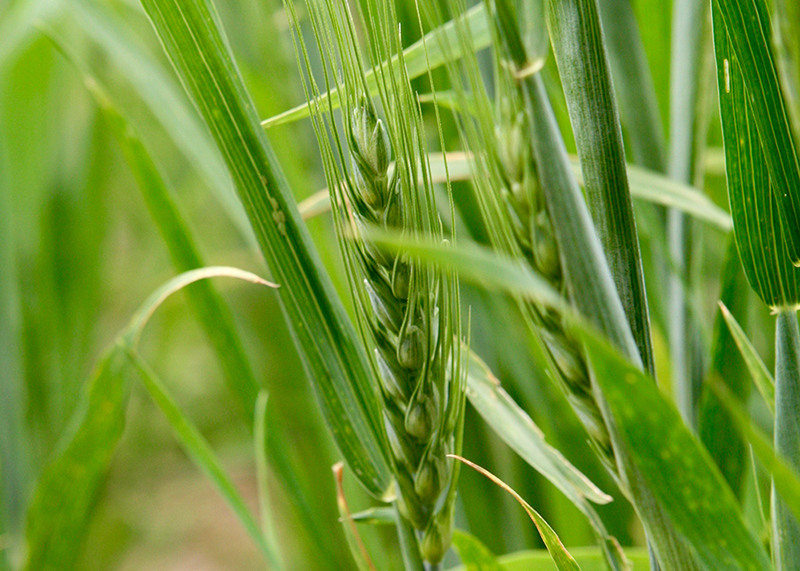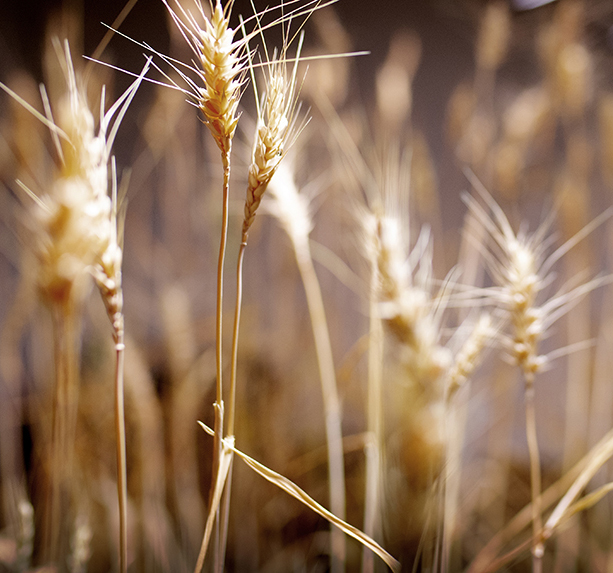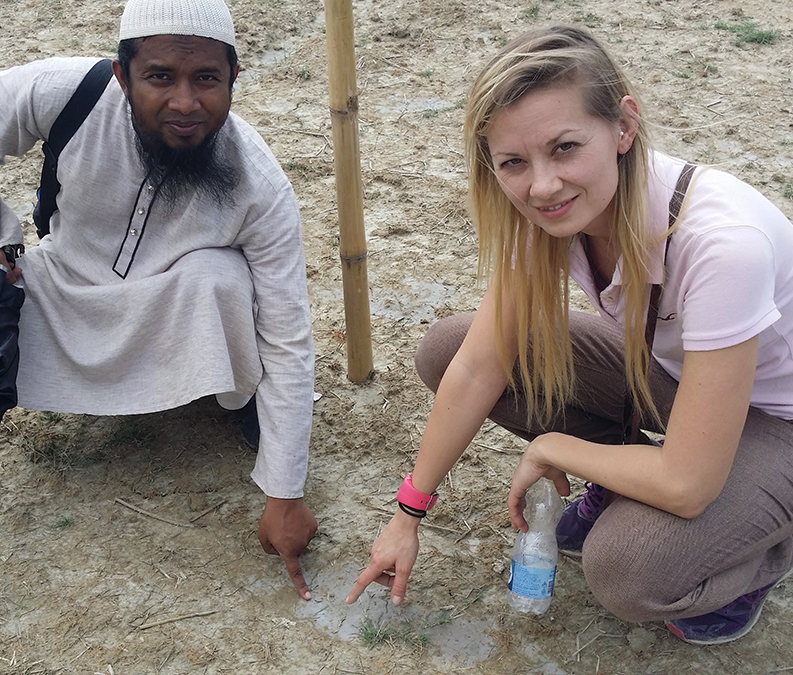- Home
- News and events
- Find news
- Working to find salt-tolerant wheat lines
Working to find salt-tolerant wheat lines

Wheat, photo Olof Olsson.
As the amount of saline land increases because of climate change, the need to find crops that can tolerate salt is growing. Researchers at the University of Gothenburg are well on their way to achieving this goal.
Poor farmers often farm in coastal areas and need salt-tolerant crops to survive. In a new study, which was based on farming in Bangladesh, researchers from the University of Gothenburg have presented 20 new varieties, known as lines, of wheat that demonstrate salt-tolerant characteristics.
“To develop wheat that is tolerant to salt, we have used molecular breeding, which involves chemical additives in the laboratory. It is a good method that has been used since the 1950s and that is not regulated like gene modified organisms (GMOs),” says Henrik Aronsson, professor of plant molecular biology at the University of Gothenburg.
 The method allows the random creation of mutations in wheat seeds, i.e. changes to the wheat’s DNA strands. The wheat seeds that show characteristics most tolerant to salt are then used for additional breeding of the next generation.
The method allows the random creation of mutations in wheat seeds, i.e. changes to the wheat’s DNA strands. The wheat seeds that show characteristics most tolerant to salt are then used for additional breeding of the next generation.
From each wheat seed, an individual plant grows that is called a line.
“Breeding hardy seeds is an extensive process. We began our research seven years ago together with Professor Olof Olsson at Lund University. We had 30,000 lines, which over time were narrowed down to a few thousand. Seventy turned out to be promising and now we have around 20 lines that are better than the others.”
Salt tolerance in wheat results from several characteristics
Wheat’s salt tolerance is a complex concept. Different genes can influence tolerance in different ways, for example a gene can impact a plant’s ability to absorb water or the plant’s tolerance of salt.
“Once we have grown salt-tolerant plants, we do not know which genes have been changed. We have to map these after the fact and compare them to the original wheat,” says Johanna Lethin, a doctoral student with the research project.
Today, about 95 per cent of the wheat’s genom has been mapped.
 According to the researchers, there are multiple ways of finding farmable wheat that is salt tolerant. And different characteristics are needed for wheat farming in different parts of the world.
According to the researchers, there are multiple ways of finding farmable wheat that is salt tolerant. And different characteristics are needed for wheat farming in different parts of the world.
“Australia, the Netherlands and Egypt also have problems with salty soils, but they may need different wheat varieties compared to Bangladesh,” says Henrik Aronsson.
While the global population is increasing, the amount of farmable land is decreasing. The UN estimates that we will need 70 per cent more food in 2050 to support the entire world population. Being able to farm and irrigate with brackish water is another challenge for the future.
 “Farmers are interested in good returns from their labour. We began our project by trying to develop tolerant crops to help poor and vulnerable farmers in Bangladesh to use their lands year round. I estimate that we can have salt-tolerant wheat for production within five to seven years.”
“Farmers are interested in good returns from their labour. We began our project by trying to develop tolerant crops to help poor and vulnerable farmers in Bangladesh to use their lands year round. I estimate that we can have salt-tolerant wheat for production within five to seven years.”
The study was published in BMC Plant Biology.
Article name: Development and characterization of an EMS-mutagenized wheat population and identification of salt-tolerant wheat lines
Link: https://bmcplantbiol.biomedcentral.com/articles/10.1186/s12870-019-2137-8
Contact:
Henrik Aronsson, professor of plant molecular biology at the University of Gothenburg.
henrik.aronsson@bioenv.gu.se +46-(0)766-18 48 02
Photo:
Wheat at top, photo Olof Olsson.
Ripe wheat, photo Malin Arnesson.
Johanna Lethin in Bangladesh, photo Henrik Aronsson.
Portrait Henrik Aronsson, Johan Wingborg.